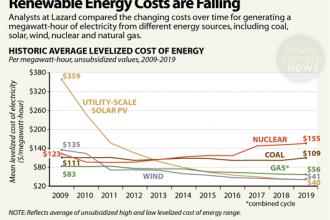Bioenergy covers a different scope of energy sources, and its job in handling ozone-harming substance outflows is very controversial- Power to Choose .
The natural effect of bioenergy frameworks differs enormously. Be that as it may, current bioenergy creation methods mean manageable bioenergy draws nearer consistently.
What Is the Definition of Bioenergy?
Bioenergy, as a word, comes from consolidating biomass (natural matter) with energy. In viable terms, bioenergy is an umbrella term for energy got from biomass. We utilize this biomass to make transportation powers, power, warming and cooling, and even items.

The natural biomass comes from living or as of late living plants and creatures, and byproducts. At its generally fundamental, bioenergy started when people consumed wood, delivering its substance energy to keep warm and cook.
Where Does the Fuel for Bioenergy Originate?
Bioenergy begins with the sun. Plants use photosynthesis to tackle the sun’s energy and develop, which we then, at that point, use.
Creatures eat and discharge these plants. We can take the energy from the creatures by eating them or utilizing their discharges. People have been consuming cow compost as fuel for millennia and involving fire as energy anymore.
Is Bioenergy a Renewable Energy Source?
Bioenergy is viewed as a sustainable power source. The necessary natural living matter, or biomass, can be regrown and supplanted in generally brief periods. Petroleum products like coal and gas require a long period to shape and are not sustainable. Be that as it may, there are regular discussions about the maintainability of some biomass sources and their future as sustainable assets.
What Are the Various Types of Biomass?
Biomass sources are numerous and different. The essential sources include:
- Harvests, grasses, and their side-effects and waste
- Lumber and wood industry results, similar to wood chips and wood pellets
- Food and preparing oil squander
- Livestock compost
- Microalgae
- Civil strong waste, e.g., landfills destinations
- Slop and waste creature fats
Biomass is a blend of waste, undesirable results, and capitalizing on uncommon fuel sources like excrement and cooking oil.
Types of Fuel using Biomass:
Adaptability is the watchword for biomass. It tends to be changed over into many types of what we call biofuels, which can then be changed over into energy. The cutting-edge world currently appreciates progressed biofuels that can power fly planes and is viewed by some to be an environmentally friendly power hotspot for what’s in store.
The most well-known utilizes of biomass are:
- Consuming to make power
- Catching waste gases to consume for warming or to make power
- Changing over into fluid transportation energizes, similar to stream fuel, diesel, or gas
- Bioproducts like bioplastics, composts, greases, and biofibers
- Biocosmetics, prescriptions, and modern synthetics
- Bioenergy advances permit us to reuse different biomasses as biofuels, for energy creation, or bioproducts.
What Are Some Examples of Bioenergy in real life?
Paper factories approach tremendous measures of biomass energizes, with wood squander material (feedstock) left over from their ranger service. Many paper plants make power nearby, consuming the feedstock to power a generator.
Ranchers use biodigesters brimming with microorganisms that review cow fertilizer to make methane to generate power and warming. A few frameworks even produce important results from the compost, like sheet material for livestock and manure.
Aircraft are blending standard fly fuel in with practical avionics fuel (SAF) to assist with tidying up their planes’ emanations. SAF is a biofuel produced using feedstocks and produces up to 80% less lifetime fossil fuel byproducts than standard stream fuel.

